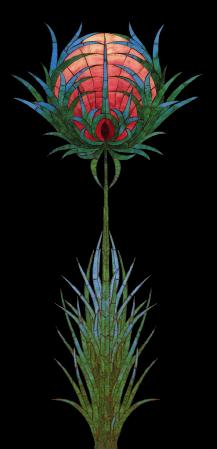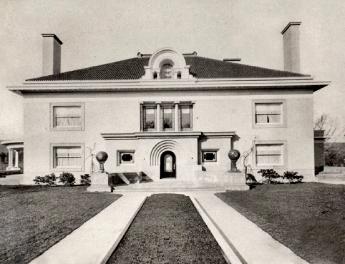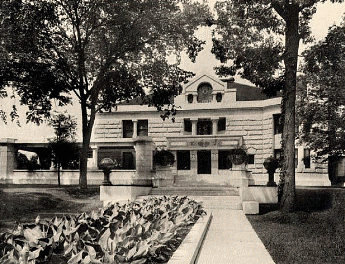 |
||||||||||||||||||||||||||||||||||||||||
The Farson House was an immediate success. Admired and imitated by other architects across the midwest, it lead to numerous additional commissions for Maher, a number of them for wealthy clients wanting to build large houses. In the upcoming years Maher’s designs would explore and redefine the qualities he’d achieved with the Farson commission. In 1897 most of the Prairie School architects were still just starting to develop what would later become known as the Prairie School style. Maher, who had been in practice for almost a decade was one of the first to develop a personal style that broke free from historical references and his work would often follow a course somewhat independent compared to other Prairie school architects. At the time, Louis Sullivan was still the major influence on the developing group of architects and Maher’s work reflected this influence. Wright’s design for the Winslow house may have influenced the design of the Farson house, but his influential Prairie houses were still several years away. Maher’s new designs tended to use formal and symmetrical compositions in contrast to Wright’s residential designs that were more picturesque asymmetrical arrangements. There is a sharp-edged geometry to Maher’s work from this period. Crisp taut surfaces cover houses based on the reduction of massing to essential forms. Among his clients was James A. Patten. Patten was a wealthy financier and speculator in grain, the mayor of the Chicago suburb of Evanston and active as a trustee of Northwestern University. In 1901 Maher designed a mansion for him. The house combined the broad sweeping horizontal porch and solid massing of the Farson residence with a rock faced ashlar exterior recalling H.H. Richardson’s use of a similar material for the Glessner House in Chicago. As with other designers of the Prairie Style, as well as the larger Arts and Crafts movement, Maher sought a design unity in the structure, interior ornamentation, furnishings and landscaping for each project. Like Louis Sullivan, Maher used ornamentation based on native plants and geometry. Maher referred to his personal approach as the Motif-Rhythm theory. Using a native plant, often in combination with a geometric shape, the motif would be repeated as a decorative element throughout the design; in the art glass of the windows, the tiles and woodwork of the fireplaces, in stenciling on walls and ceilings, as a decorative element on furniture, on light fixtures and any item created for a house. In Maher’s theory, this repeated use would visually tie the design together. The thistle was selected as the motif for the Patten house. Upon its completion the Patten house was widely published in architectural journals of the time. Unfortunately, the house would be torn down years later in 1938. >> |
 |
|||||||||||||||||||||||||||||||||||||||
 |
||||||||||||||||||||||||||||||||||||||||